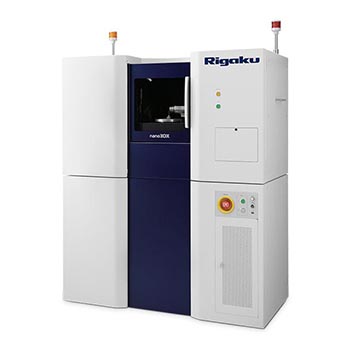STRING CHEESE TEXTURE ANALYSIS
About the sample: String cheese
String cheese has a unique stringy and stretchy texture. This texture is created by stretching the cheese while heating, folding it, and repeating the process. Due to the heating, the milk proteins can move and align parallel to the direction of the stretching. This orientation of the milk protein is where the texture comes from. However, how people feel the texture of a certain food varies depending on their taste, and it is a difficult property to scientifically and quantitatively measure. But the texture itself can be measured. X-ray CT (computed tomography) can image food textures in 3D and can be used to analyze them quantitatively.
Analysis procedure
- In this example, a piece of string cheese was scanned using a submicron-resolution CT scanner, nano3DX.
- The cross-sections of the cheese from different directions were investigated to understand the texture.
- The solid part was segmented from the air. The thickness distribution of the solid part was analyzed.
1. CT scan
A piece of string cheese of about 2 mm diameter was scanned to produce the 3D grayscale CT image.
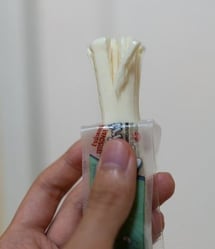
2. Texture observation
The three cross-sections in the horizontal ((a)) and two vertical ((b) and (c)) directions are shown along with a 3D rendered image at the right bottom corner.
The gray levels represent the density of materials. The air (void space) appears dark, while the solid cheese, consisting of mainly protein and fat, appears light. The bright spots are salt.
From the cross-sections, you can see the cheese strings are parallel to the vertical direction. But they are not a collection of individual fibers but rather form a mesh-like network.
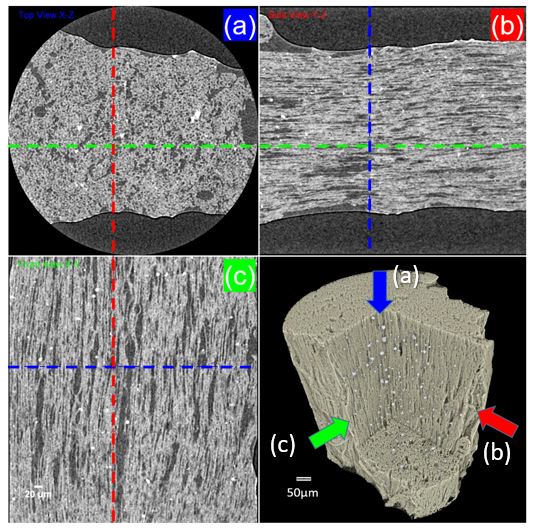
3. Thickness distribution analysis
The solid cheese part was segmented, and the thickness distribution was analyzed. The thin and thick parts appear orange and green, respectively, varying from 1 to 11 microns. You can see that the cheese strings are not individual strings with a constant thickness. They have nodules of about 10 microns in size distributed across evenly, and these nodules are connected with a network of thin strings.
A complete evaluation of the string cheese by combining the CT, X-ray diffraction, and thermal analyses: Kim et al., (2020) Rigaku Journal, 36(2), 6-10
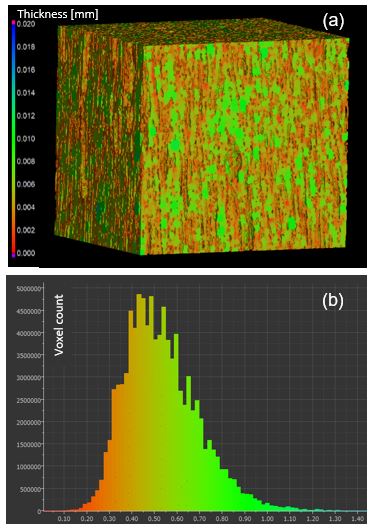
More Food Application Examples
Watch an on-demand webinar about X-ray CT food applications.
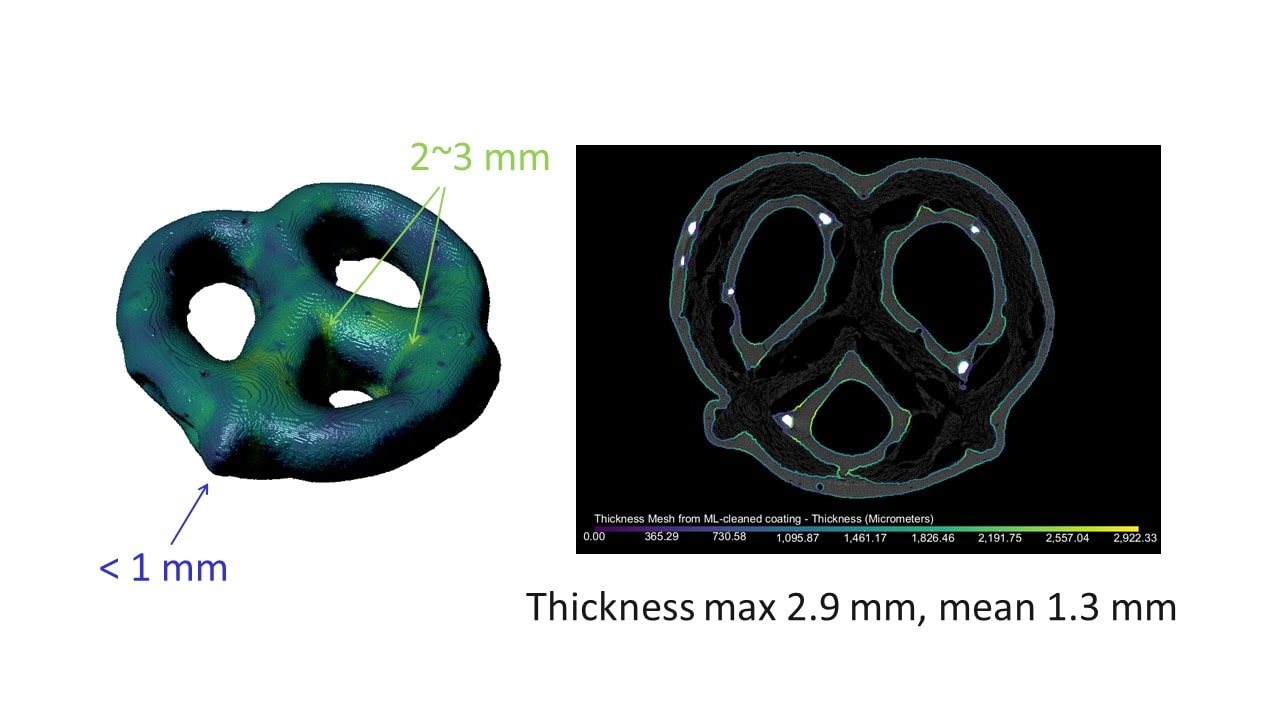
Pretzel coating analysis
Application Note
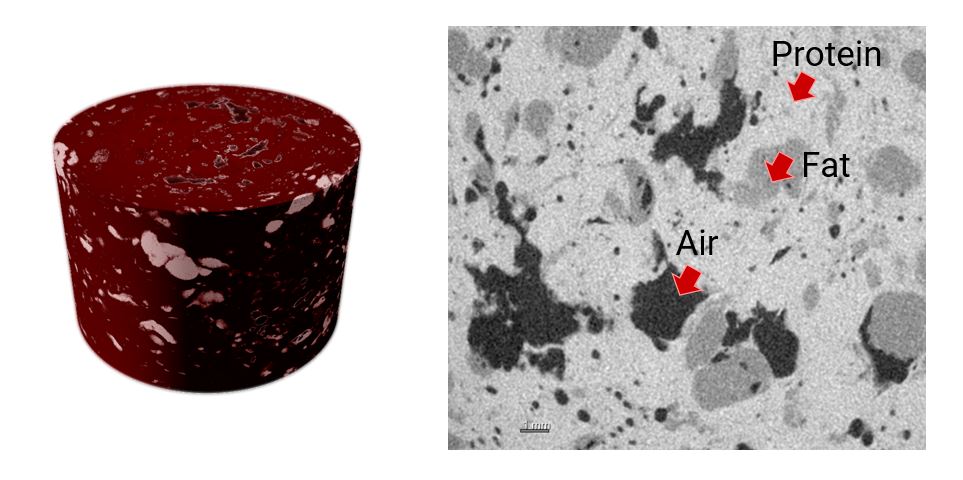
Processed meat fat and protein analysis
Application Note
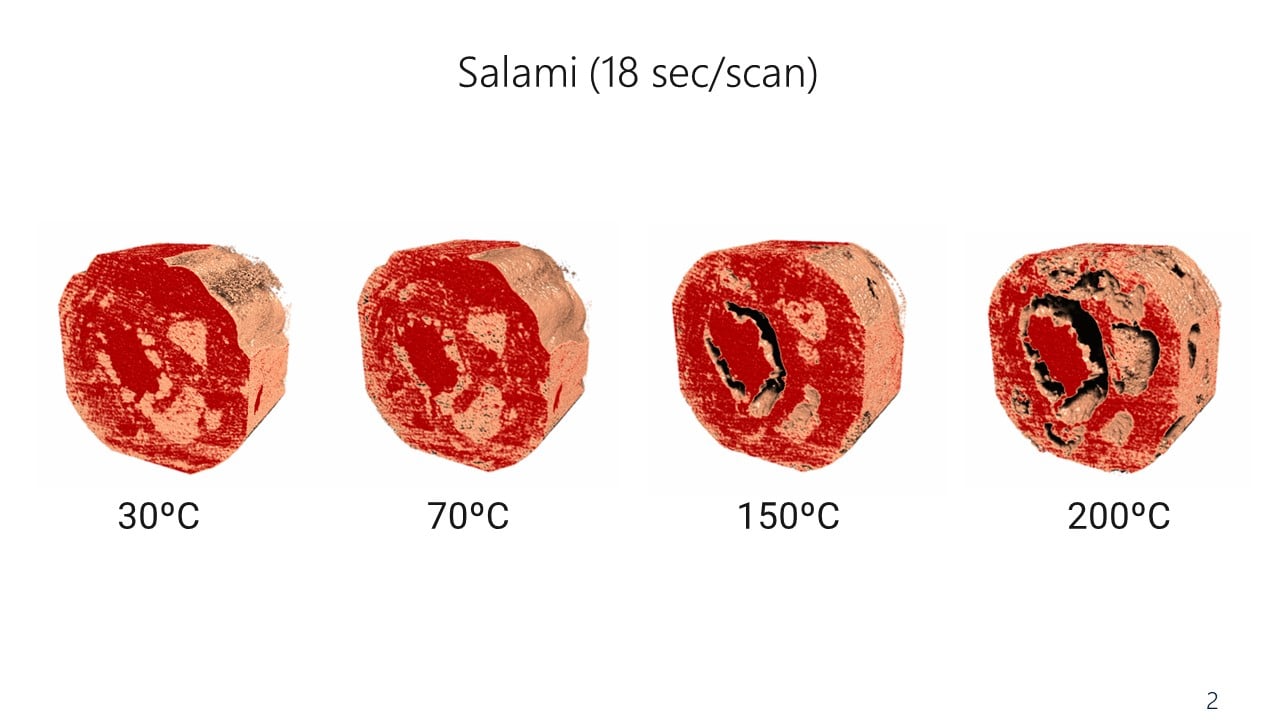
Processed meat heating experiment
Application Note
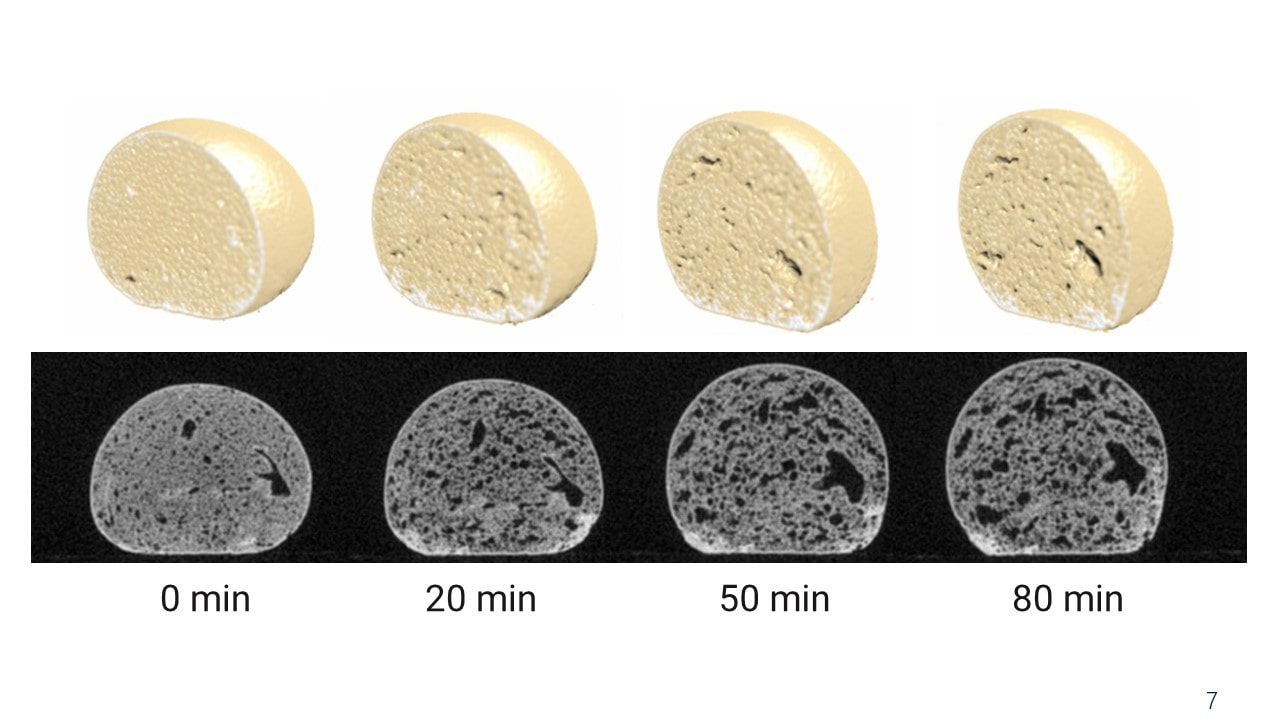
Bread dough rising process
Application Note
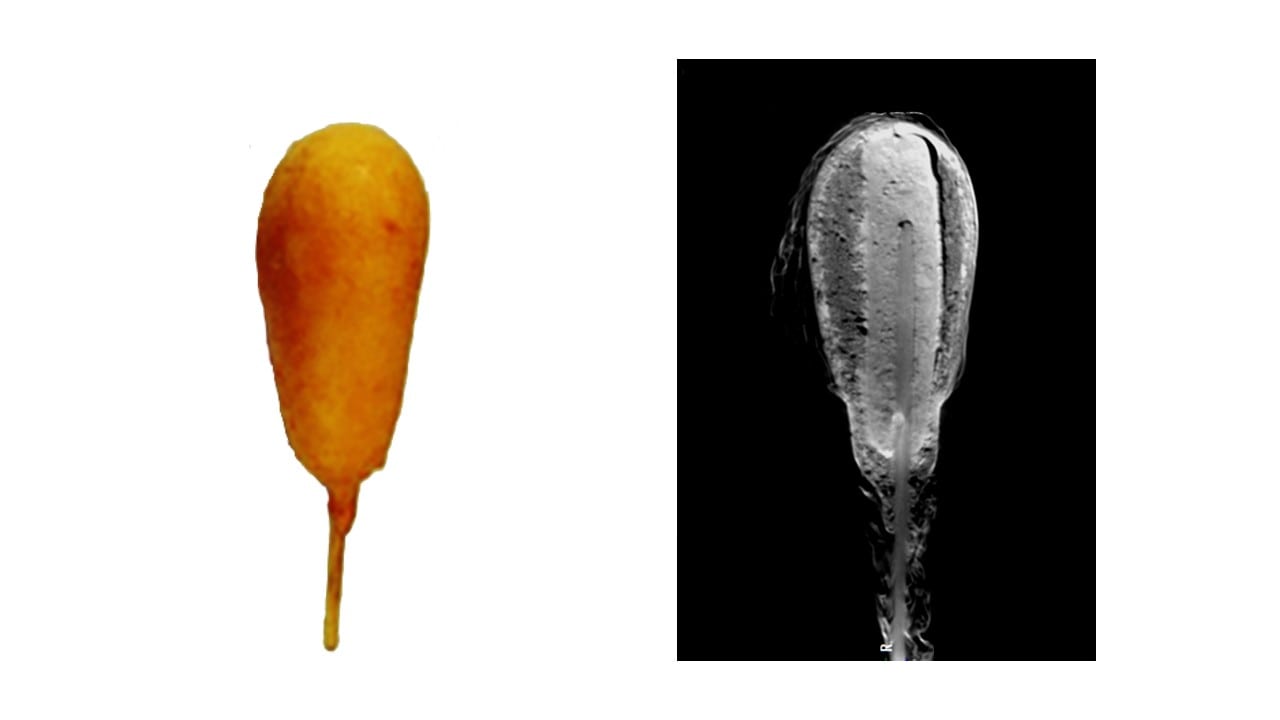
Breading air oil distribution analysis
Application Note
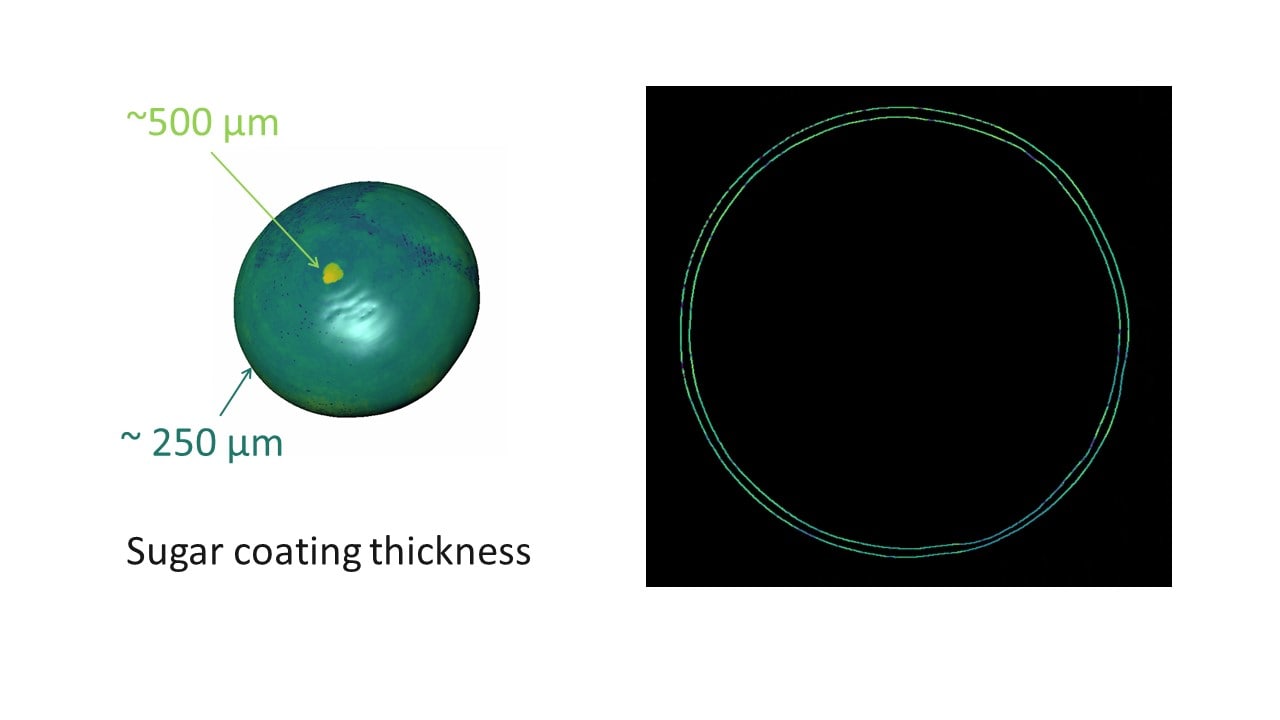
Chocolate candy sugar coating analysis
Application Note
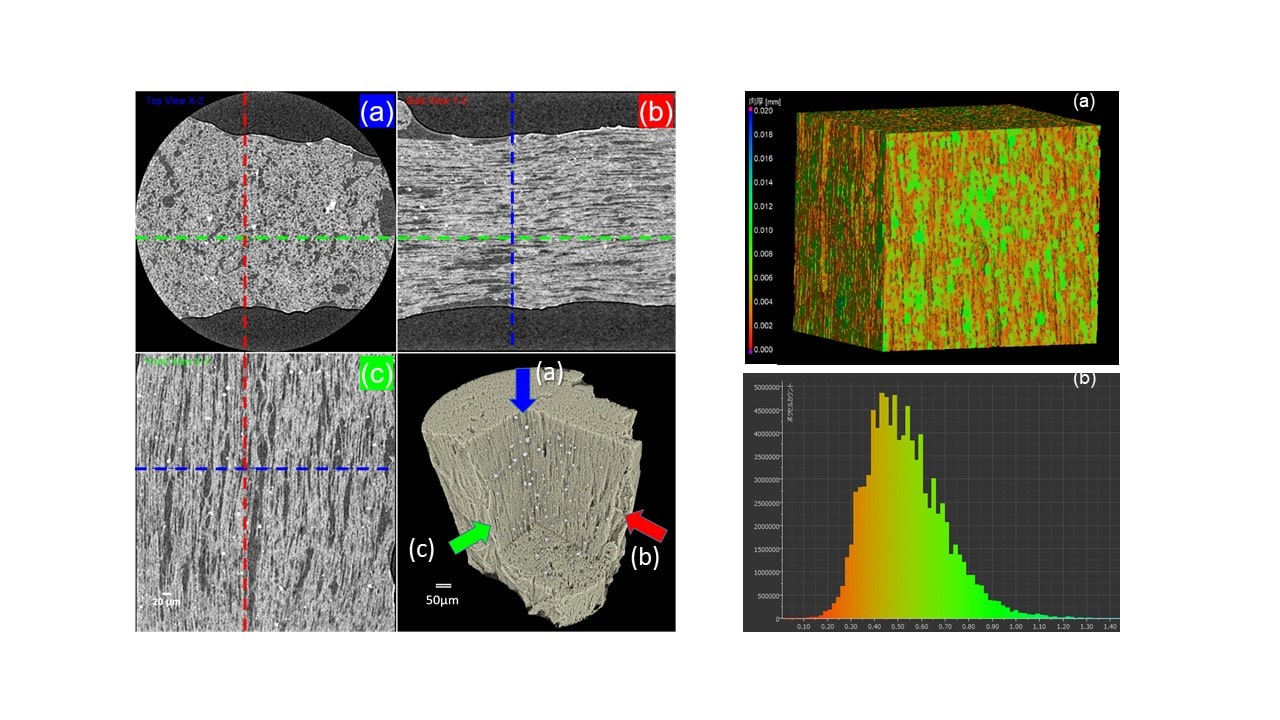
String cheese texture analysis
Application Note


